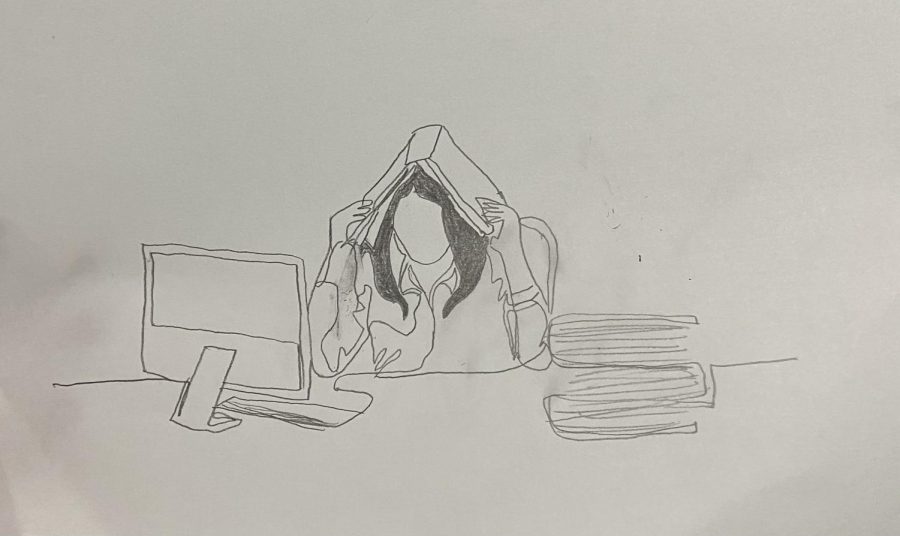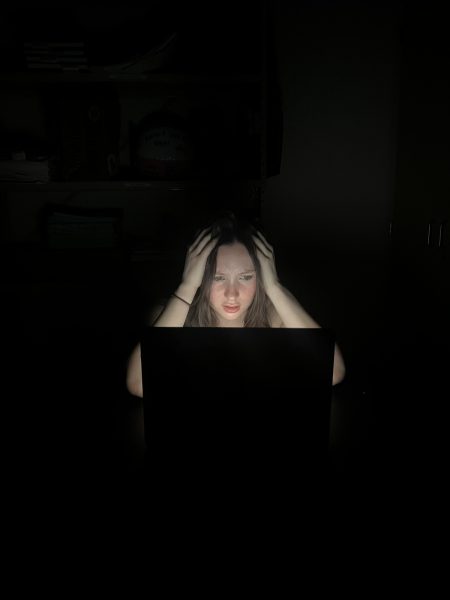The downsides of virtual schooling
During the era of online schooling, students are often faced with the consequences that come with sitting for an extended period of time staring at a screen. There is a variety of mental as well as physical harm that comes with having to do online school. While it is the safer option right now because of the pandemic, is it actually helping students learn to the best of their abilities? Simple answer: No. There are so many faults with how online school has been set up, from the many internet hassles people go through where they could get disconnected or freeze up. I could go on and on about the many inconveniences that come with online schooling.
The number one problem that all students are facing around the world from an online school is isolation. Students are staying holed up in their rooms, forced to be online for more than eight hours a day. This is quite harmful to their brains. In a classroom, a social setting is beneficial to the learning process as it allows students to interact with one another and learn from each other. Being alone every day and attending school by yourself can get super lonely, which can cause social anxiety later on.
In teens and children especially, maintaining healthy relationships and interacting with others is critical for their brain whilst they are growing into adulthood. A way that social anxiety plays out during online learning is that often, students will not raise their hands to ask questions, for fear that the whole class is listening. It gives a lot of kids extreme anxiety and pressure so that they would risk not understanding the material to avoid raising their hands to ask a question.
Another important point to make is online classes can be ineffective for an individual’s learning. While some students might thrive on taking notes and listening to teachers, others might have a difficult time trying to teach themselves solely based on notes and lectures. Not every student is the same. While one could prefer to actively learn by seeing, another student’s most effective way of learning could be hands-on or face-to-face interaction with the teacher where they work out the problem along with the teacher. Of course, there is also the matter of how each class is set up because one class could have great online programs while others have incompetent programs. It also depends on the teacher as well because they could either be really great with technology and know-how to keep everything on track or they may not be tech-savvy. When it boils down to it, it is a matter of preference for each student and what type of environment that they excel in.
Knowing exactly how to manage your time is one of the most important tools to succeed while in-person schooling or online schooling. Now that school is online, more students are in the comfort of their own homes, so it is a lot easier for them to get distracted. With video games, television and phones right next to you, it’s very easy to use them while we’re in classes virtually. With no supervision restricting students from using their phones, it is much easier to sit or lay down the whole class period and simply not pay attention while the teacher is teaching a lesson. Clearly, this is not an effective learning method, and there should be better methods to teach students online.
Finally, one of the biggest headaches that students get from the online learning experience is that there’s no way to pace the lecture. Whereas in a classroom, the teacher can follow along and see if the students are grasping the material, that is just not possible in an online class. Yes, you can attend virtual office hours if you feel you did not fully understand the material, but they are simply not as effective. This is because office hours are usually done in a chat room, and writing out equations on the online whiteboard does not work because it is so much messier and harder to read. Until we can find a better way that technology can support our education, virtual schooling cannot hope to compare to in person.













